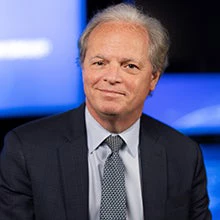I recently watched a remarkable work of art take shape. A mural depicting the story of the IDA, the World Bank’s fund for the poorest, brings to life the many transformative changes the world has seen since IDA’s founding in 1960. The “green revolution” staved off widespread famine in South Asia in the 1970s. The Montreal Protocol protected the world’s ozone layer. Haiti rebuilt its homes and schools following a devastating earthquake.
In the best spirit of international cooperation, IDA and its partners were there to help the poorest countries at every turn.
Cooperation and partnership have ushered in an unparalleled period of growth and poverty reduction. The percentage of people living in extreme poverty around the world fell under 10 percent globally in 2015. Today, roughly 700 million people live in extreme poverty – a reduction of more than 1 billion people since 2000.
At the country level, the multilateral spirit behind IDA has yielded significant results on issues ranging from climate change and fragility to crisis response and access to basic infrastructure.
In rural Bangladesh, for example, nearly 5 million people now have solar electricity and about 20,000 households are being connected each month. In Vietnam, climate-smart agriculture is reducing greenhouse gas emissions by 30 to 35%. In refugee camps in Ethiopia and Kenya, more than 1.5 million people benefited from expanded health, nutrition and sanitation services over a 2-year period, helping them regain stability and dignity.
To secure development gains like these and accelerate others, we need the continued, strong support of our partners, particularly as we finalize negotiations on the replenishment of IDA’s resources in Yogyakarta, Indonesia, next week.
IDA is already one of the most important and innovative tools the international community has to tackle these challenges. Here’s why the 18th replenishment of IDA, covering investments in IDA borrower countries from July 2017 to June 2020, could be even more ground-breaking.
The policy and financing package calls for a doubling of resources to countries facing fragility, conflict and violence and addressing the root causes of these risks before they escalate. Additional financing is being proposed for refugees and their host communities. The fund takes aim at mobilizing private capital and scaling up private sector development, particularly in fragile situations, while introducing stronger policy commitments across the board in areas like climate change, gender, governance, institution building, jobs and economic transformation. IDA18 also calls for a stronger response to crises, pandemic preparedness, small states and regional integration.
To finance this transformative package, IDA is looking to leverage its equity by blending donor contributions with internal resources and funds raised through debt markets, enabling it to provide clients with billions of dollars in additional resources. IDA recently received triple-A credit ratings from S&P and Moody’s—a critically important first step to enable IDA to access capital markets. The ratings reflect the strong equity and management of IDA, its governance structure, strength of donor support, and ability to deliver results.
Next week, the global community will finalize negotiations in Indonesia on the policy and financing for IDA18. This is our chance to tackle head-on the challenges of 21st century, to make sure we are doing everything we can to help governments function, ensure women have access to online banking, and build weather-resistant housing and early warning systems in cyclone-prone areas. This is our chance to help break the cycle of conflict and poverty, by building strong private sectors and creating jobs, and harnessing the power of the sun so kids can study at night.
This is our chance to paint a much brighter future for the poor and vulnerable, and put them on a path to self-sufficiency. Let’s get it right together.
For more on IDA, follow us on Twitter at @WBG_Fin4Dev or join the conversation with #IDAWorks.
Related
IDA- World Bank’s Fund for the Poorest
IDA18 Replenishment
Press Release: IDA Receives Triple-A Credit Rating


Join the Conversation